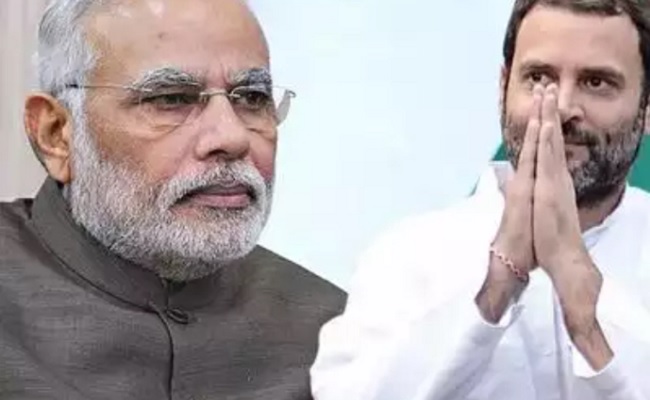
India News

The stage is set for face-to-face elections across the country. For the first time in many decades, there will be a direct contest between two parties at the national level in the Lok Sabha elections, and it appears that the Lok Sabha elections in the states will also witness face-to-face battles. Triangular competition seems unlikely, even where no alliances exist.
While Modi's camp is preparing for this face-to-face election, opposition parties are also stepping forward with the same vision. Out of the 543 Lok Sabha seats in the country, the likelihood of face-to-face fights in more than 450 seats is clear.
The opposition alliance has prepared for face-to-face elections based on the percentage of votes received in the last elections.
In the previous election, the BJP secured 37 percent of the votes, but with all allies included, it reached 40 percent. This indicates that 60 percent of voters cast their ballots against the BJP. The opposition coalition aims to secure 70 percent of these 60 percent votes. They are gearing up for the election campaign with the goal of uniting scattered opposition votes and achieving results beyond the BJP's reach. If successful, the opposition will secure more votes than the BJP.
On the other hand, Prime Minister Narendra Modi has set a target of securing more than 50 percent of the votes and winning 370 seats for himself, while the NDA aims for more than 400 seats.
In the 17 Lok Sabha elections held so far, no party has secured 50 percent of the votes. In 1984, under the leadership of Rajiv Gandhi, the Congress won 415 seats, but even then, the Congress received only 48 percent of the votes. In 2019, Narendra Modi's BJP won 303 seats, but only secured 37 percent of the votes.
Looking at the opposition parties, in 1977, all the opposition parties contested together and won 295 seats out of 405. The opposition received 41.32 percent of the votes. In 1989, the Congress managed to win only 197 seats despite securing 40 percent of the votes. With this, the opposition was able to form the government.
However, in some states, there is no three-way competition. In Punjab, the main contest is between the Congress and the Aam Aadmi Party, with the BJP-Akali Dal creating a three-way contest.
Similarly, in Andhra Pradesh, the main competition is between YCP and TDP, with the Congress not having enough seats to form a three-way contest even if Sharmila enters the field.
In Telangana, the main competition is between Congress and BRS, with the BJP unable to establish a three-way competition despite its efforts.
In Odisha, the main contest is between the Biju Janata Dal and the BJP, with the Congress attempting to create a three-way contest.
In major states like Bihar, Uttar Pradesh, Rajasthan, Madhya Pradesh, Gujarat, Himachal Pradesh, Maharashtra, Uttarakhand, and Karnataka, the NDA and India alliance have to face inevitable face-to-face competition.
In Kerala, there is fierce competition between the Left and Congress parties, with the BJP lacking the power to create a three-way fight there.
Finally, in West Bengal, the main contest is between the Trinamool Congress and BJP, with no chance of a three-way competition. Although the Trinamool Congress has entered into an agreement with the Congress and contested separately, that party is not a decisive force, and the future of the Left remains uncertain.
Advertisment